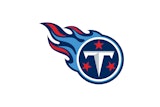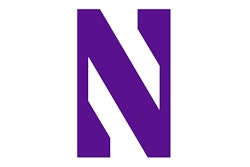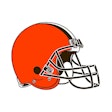![[Photo courtesy of ScoreVision]](https://img.athleticbusiness.com/files/base/abmedia/all/image/2018/09/ab.PurchGuide918_feat.png?auto=format%2Ccompress&q=70&w=400)
The scoreboard used to be an afterthought. Whether you were sitting in the stands at an NFL stadium or in a college natatorium, the scoreboard was there to give you the essential information — game clock, race time, score, possession — on the event at hand. That's changed as venues at all levels are now upgrading to high-tech video boards. Unlike their point-tallying predecessors, today's video displays can stream high-definition video, broadcast replays and prompt engagement from fans through social media. And the technology is now available at price points accessible even to high schools. Here's a look at some of the things to consider if your facility is in the market for a video board:
Size
Choosing the right size video board for your venue is as important as picking the right size TV for your living room. The display should be big enough for fans and athletes to see but not so big that it upstages the action on the field. Most display providers offer a range of sizes and some can even customize a board to fit your specific space and budget.
RELATED: Hosting Soccer, Football in Baseball Stadiums
Pixels
Almost all video displays today employ Light-Emitting Diode (LED) technology. "Pixel pitch" will determine the resolution of your display, as the term refers to the distance between the center of one pixel or LED cluster to the center of the next pixel or cluster, as measured in millimeters. (A 6mm pixel pitch offers a higher resolution than a 10mm pixel pitch, for example.) There is a fine balance between size, pixel pitch and budget. You'll pay more for a display with more pixel clusters. However, depending on how close your audience is to the screen, you may be able to get away with a higher pixel pitch, thus reducing the overall cost. Display providers will typically suggest a higher pixel pitch for outdoor environments, where fans tend to sit farther away from the display.
RELATED: PRODUCT SPOTLIGHT 2018: Stadiums & Outdoor Surfaces
Software
You'll want to speak with a number of providers to inquire about the type of software they use for controlling their displays. Today's video boards can do a lot with the right software. From instant replays to integration with social media, it's important to have a grasp on what features you need. Most displays will come with a basic software package, but third-party software is also an option for some displays. These platforms may offer expanded control and production capabilities but can also carry a hefty price tag that in some cases may exceed the price of the board itself.
RELATED: Find more solutions for your facility in the Buyers Guide
Advertising
Today's video boards are their own advertising channel. Many communities are able to cover the cost of their purchase by selling advertising to local businesses. A typical high school sporting event might offer anywhere from 10 to 20 opportunities for an advertisement to run between plays. If budget is an issue, advertising should be front and center in the decision-making process, with a plan in place to leverage your facility's new technology for additional revenue.
This article originally appeared in the September 2018 issue of Athletic Business with the title "Purchasing Guide" Athletic Business is a free magazine for professionals in the athletic, fitness and recreation industry. Click here to subscribe.
































